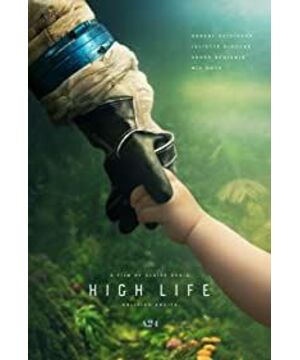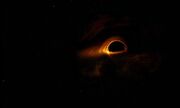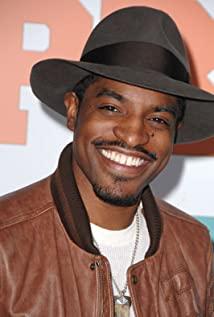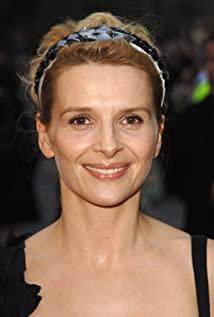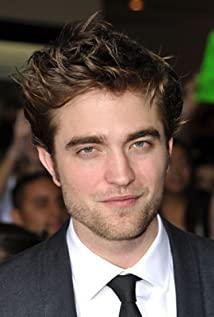Claire Denis, as the most important contemporary female director in France and even the entire world, she has always adhered to her observation of the world's human nature in her film creation career for 30 years. This is also the leader of her author and director. Important reason.
She has also tried a variety of themes, plot, horror, suspense, love, various themes are easily manipulated in her hands. This time, she tried sci-fi movies that most authors and directors would not try, and transformed this genre into her own style perfectly.
The film premiered at the 2018 Toronto Film Festival and immediately became a big hit at the film festival, and it has appeared in major film festivals successively, fulfilling the expectations for it. After reading this film, I can say very responsibly that this work has never failed everyone's expectations for it.
Since it is a science fiction film of author nature, the scientific knowledge contained in this film is naturally not so "hardcore". But obviously, the director did not want to discuss these intentions. The focus of this film is still Claire Deney’s preferred motif of desire. The balance of gender in the whole story is also very subtle and interesting, which is also what this female director is good at.
But the reason why she chose to use science fiction themes to carry her expression can be seen as putting a layer of mystery on the film. We still have too little understanding of space, and black holes have only recently seen their true "face". Under such a theme, this kind of discussion will be even more fascinating.
For science fiction films, the audiovisual presentation is undoubtedly very important. Due to investment constraints, this film is naturally not comparable to those Hollywood Super A-level blockbusters in terms of visual effects, but it is only the gap in the fineness of the special effects, and it is not lost in the visual aesthetics level.
The space layout is very stylized, not just a minimalist style. It uses rich lighting in different scenes, the strong contrast between blue and yellow in the indoor space, and the purple or red lighting in the laboratory. Not only occupy the line of sight, but also contain abundant expressions. Another advantage of confining space is that it allows the entire story and characters to move within a known frame, which is also an important reason for choosing a space background. At the same time, in the context of science fiction, more surreal settings can also be within a reasonable range.
The music as a whole is silent, except for a burst in a few important passages. The highlight moment used in the soundtrack of the whole film is no better than the masturbation section of Binoche's large-scale performance. The high-contrast lights are flickering and dimming, combined with the strange chanting and the strange soundtrack, giving birth to a kind of strange sacred.
When looking back at the whole story of the film, it is very simple, and it is more of the author's symbolic purpose.
By slowing down the rhythm of the story, the characters have very little dialogue, reducing the movement range of the characters, and fully reflecting the lonely and cold atmosphere. At the same time, he will focus more on the symbol and expression of the author. It can be said that all the visualization methods in this film are for this purpose.
The epitome of death row prisoners in a space capsule, the doctor's reproduction plan, why can't it be regarded as the development process of the entire mankind. And just a few characters are enough to constitute an abundant life portrayal.
Juliet Binoche’s character, Doctor Dibbs, can be regarded as the "Creator", full of the desire to create life. The role of Robert Pattinson corresponds to the "father", calm and restrained, but as the source of life, he also carries a sense of fatalism. The role female prisoner Boes is the "maternal body", in a passive state. The other characters also have their own characteristics, either agitated or anxious.
Flying into space is to create a brand-new enclosed space and also a parallel earth. The various natural green plants of the space capsule are more in line with the theme of the film. When the silent camera sweeps slowly After that, you can clearly glimpse the beauty of that kind of life.
When the doctor collects semen, it collects fire. Then implant the mother body. It is the rebirth of mankind and the reappearance of life.
Their masturbation through the "box" is a concrete manifestation of desire. In the lonely space, because of the instinct of desire, life can be continued. The reason why life can become life is not because of desire. And that flash of blood red is a visual manifestation of desire and anxiety.
The interaction between the role of the doctor and the hair is also very interesting. The author seems to have given a kind of symbolic meaning of "yoke". At the beginning, she has always tied her hair and braided it. When masturbating, she untied her braid and released it. Her desire. After that, she twisted her hair back to the back of her head, which was a temporary ban on desire. When facing the vent, she untied her hair and enjoyed herself, and her expression was not a vent.
At the same time, the lens has repeatedly portrayed the flow of liquid in detail, which is the flow of desire, and this is the instinct of urgent intercourse. This is also the fusion of blood and water, which symbolizes life, flowing eternally like stars in space.
Violence is a different color in the whole life process, and extreme violence means the end of life. In this film, the violent element is not only the director's narrative weapon, but also an indispensable turning point in this fable of life, using blood to promote all characters and rewrite everything.
Stylized lighting has also become part of the symbol. The original image was dark blue, which was a mysterious and gloomy blue, accompanied by wind mania. The last piece of warm bright yellow, that is the color of the birth of life, is the light of life left after the catastrophe in the universe, which will accompany the skyline until eternity, completing Denis's ode to life.
And the off-white subtitles at the end are not the holy resurrection of all things. In the end, it is classified as darkness, into the infinite mystery of the vast universe. What really catches people is the author's continuous spiritual motivation.
If Stanley Kubrick's "2001 A Space Odyssey" and Andrei Tarkovsky's "Flying to Space" represent the two extremes of science fiction genre exploration, then this film is between these two extremes. At that time, I found a breakthrough with great ingenuity. I chose the genre without being restricted by the genre, and completed such a very "small" movie, but it can still be seen from the small, with extraordinary temperament and real author movie.
This is an abstract story, but it is also a concrete story. It can be the origin of the entire world in the macroscopic view, or the inheritance of a blood relationship in the microscopic view. I think really great science fiction films need this kind of function.
This article was first published on the public account [Watching a movie and seeing death]
View more about High Life reviews


